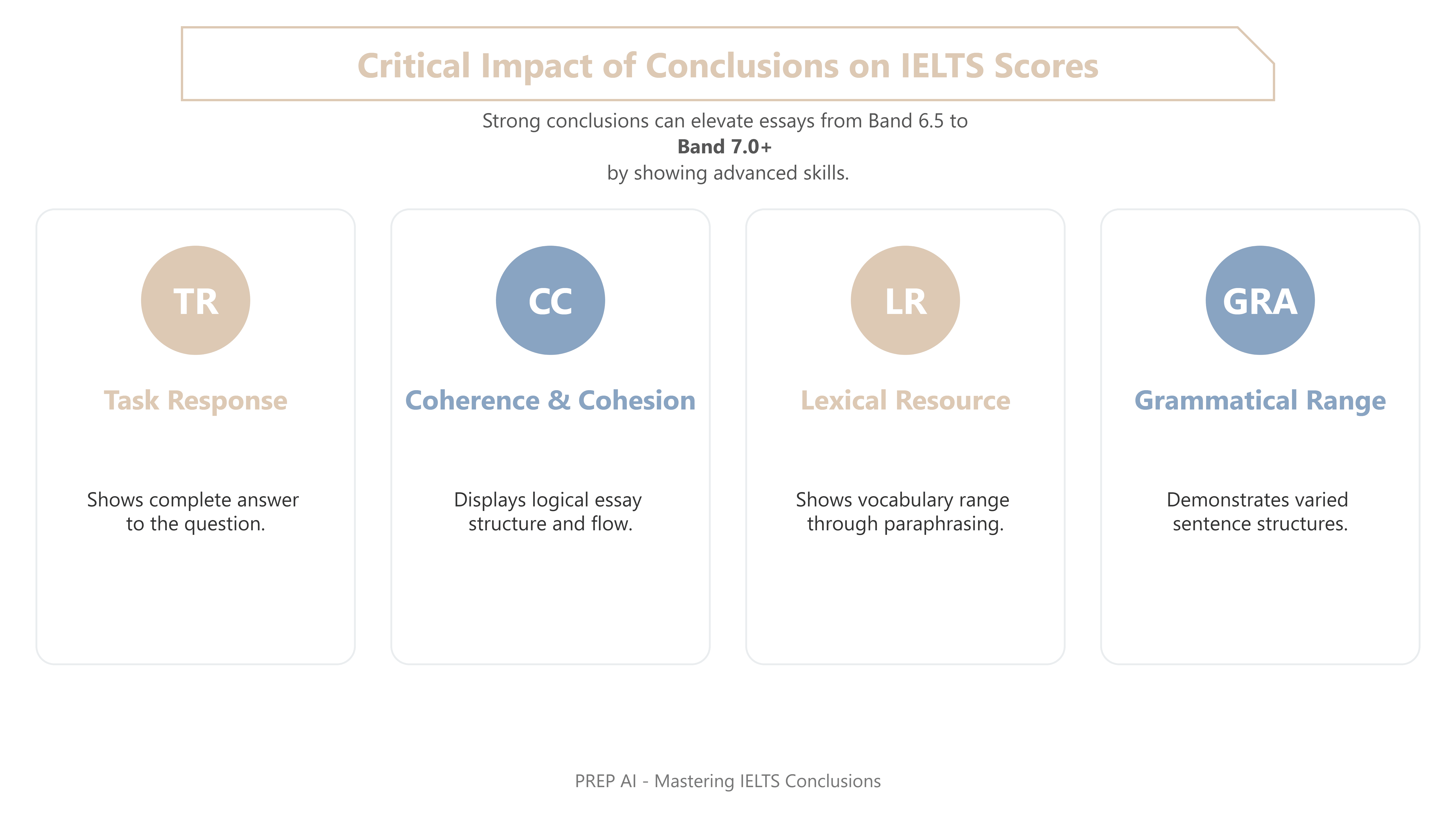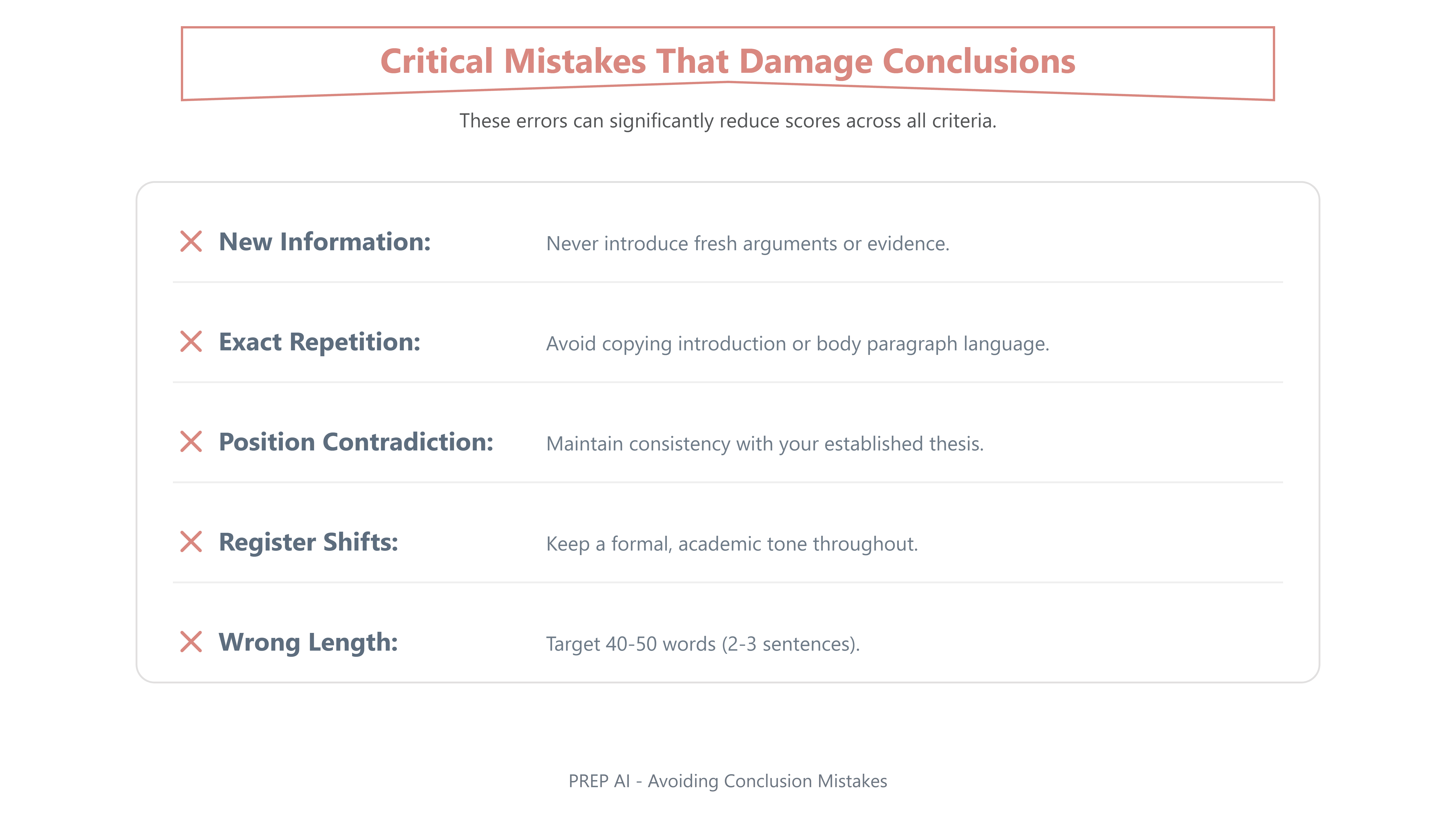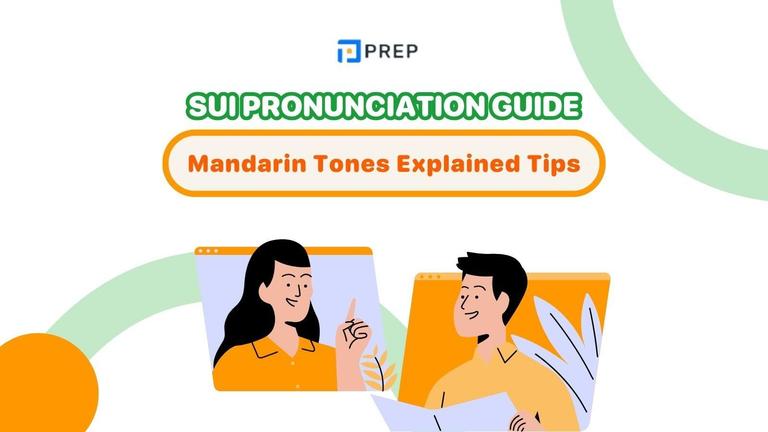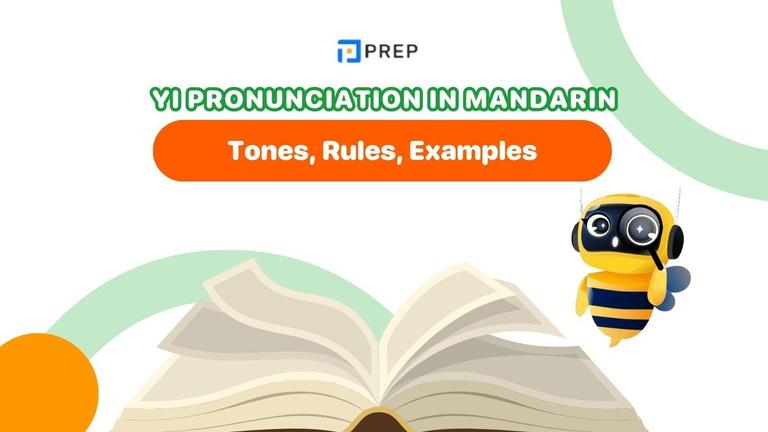How to Write Strong Conclusions in IELTS Writing Task 2
Writing an effective conclusion in IELTS Writing Task 2 directly affects your band score across Task Response and Coherence criteria. This guide shows proven methods to create powerful conclusions that display advanced language skills and help you achieve higher scores. Understanding how to write conclusion in IELTS Writing Task 2 is essential for success.

I. Critical Impact of Conclusions on IELTS Scores
Your conclusion in IELTS Writing Task 2 influences multiple scoring areas and can raise your band score considerably.

Scoring Impact Areas:
-
Task Response: Shows complete answer to the question
-
Coherence and Cohesion: Displays logical essay structure and flow
-
Lexical Resource: Shows vocabulary range through paraphrasing
-
Grammatical Range: Demonstrates varied sentence structures
Strong conclusions show advanced organizational abilities and can improve essays from Band 6.5 to Band 7+ when they display sophisticated language use and logical thinking. The format of IELTS Writing Task 2 requires proper conclusion structure for maximum effectiveness.
II. Four-Step Formula for Perfect Conclusions
|
Step |
Action |
Word Count |
Purpose |
|
1 |
Rephrase thesis |
10-15 words |
Show lexical variety |
|
2 |
Summarize main points |
15-20 words |
Demonstrate synthesis |
|
3 |
Final insight |
10-15 words |
Display critical thinking |
|
4 |
Proofread |
N/A |
Ensure accuracy |
Step 1: Rephrase Your Thesis Change your introduction statement using different vocabulary while keeping the same meaning.
Step 2: Summarize Supporting Evidence Briefly combine body paragraph arguments without adding new information.
Step 3: Provide Final Insight Connect your argument to broader implications or future considerations.
Step 4: Review for Accuracy Check grammar, register, and logical flow alignment. This approach to conclusion in IELTS Task 2 ensures comprehensive coverage.
III. Advanced Vocabulary and Strategic Phrases
Sophisticated Transitional Expressions:
|
Expression |
Function |
Advanced Example |
|
In summation |
Academic closure |
In summation, technological integration necessitates comprehensive pedagogical reform |
|
Notwithstanding these considerations |
Acknowledging complexity |
Notwithstanding these considerations, environmental preservation remains paramount |
|
Given the aforementioned factors |
Reference to evidence |
Given the aforementioned factors, sustainable urbanization requires multifaceted approaches |
|
On balance |
Weighing arguments |
On balance, digitalization enhances rather than supplants traditional methodologies |
|
In the overarching context |
Broader perspective |
In the overarching context, cultural globalization presents both opportunities and challenges |
|
All things considered |
Comprehensive evaluation |
All things considered, renewable energy represents the quintessential solution |
|
By and large |
General assessment |
By and large, educational technology facilitates rather than impedes learning |
|
In the final reckoning |
Ultimate judgment |
In the final reckoning, sustainable development requires unprecedented global cooperation |
|
Taking everything into account |
Complete consideration |
Taking everything into account, urbanization necessitates innovative infrastructure solutions |
|
When all is said and done |
Definitive conclusion |
When all is said and done, cultural preservation demands collective societal commitment |
High-Level Vocabulary Arsenal:
Sophisticated Concluding Verbs:
-
Substantiate: The evidence substantiates the proposition that...
-
Corroborate: Research corroborates the assertion regarding...
-
Vindicate: These findings vindicate the hypothesis concerning...
-
Crystallize: The discussion crystallizes the notion that...
-
Exemplify: Contemporary trends exemplify the paradigm whereby...
Advanced Linking Expressions:
-
Concomitantly: Occurring simultaneously with stated benefits
-
Inexorably: Leading inevitably to certain outcomes
-
Paradigmatically: Serving as a representative example
-
Ostensibly: Appearing to be true on the surface
-
Categorically: Without exception or qualification
Sophisticated Modifying Phrases:
-
Incontrovertibly: Beyond dispute or argument
-
Unequivocally: Leaving no doubt about meaning
-
Intrinsically: As an essential characteristic
-
Pervasively: Spreading throughout extensively
-
Categorically: In an absolute manner
Complex Conditional Structures:
-
Were society to embrace: Hypothetical future scenario
-
Should policymakers implement: Conditional governmental action
-
Had these measures been adopted: Past hypothetical reflection
-
Assuming current trends persist: Future projection based on evidence
Academic Hedging Language:
-
Ostensibly beneficial: Apparently advantageous
-
Purportedly effective: Claimed to be successful
-
Putatively superior: Supposedly better
-
Conceivably transformative: Possibly revolutionary
-
Potentially paradigmatic: Possibly serving as a model
Synthesis and Analysis Terms:
-
Amalgamation: Combination of different elements
-
Confluence: Coming together of multiple factors
-
Juxtaposition: Placing contrasting ideas together
-
Dichotomy: Division into two opposing parts
-
Synthesis: Combination forming a coherent whole
IV. Critical Mistakes That Damage Conclusions

Conclusion Killers to Avoid:
-
New Information: Never introduce fresh arguments or evidence
-
Exact Repetition: Avoid copying introduction or body paragraph language
-
Position Contradiction: Maintain consistency with established thesis
-
Register Shifts: Keep formal academic tone throughout
-
Wrong Length: Target 40-50 words (2-3 sentences)
These errors can significantly reduce scores across Coherence, Task Response, and Lexical Resource criteria. Avoiding these mistakes when writing conclusion in IELTS Writing Task 2 prevents score reduction.
V. FAQs about Conclusion in IELTS Writing Task 2
Optimal Length for Conclusions Write 40-50 words representing 10-15% of total essay length for proper structural balance. This follows the standard format of IELTS Writing Task 2.
Personal Opinion Inclusion Include personal perspectives in opinion-based essays while maintaining academic tone and logical alignment with presented evidence.
Structure Adaptation by Essay Type Adapt conclusions based on question requirements: discussion essays need balanced summaries, argumentative essays require definitive position reinforcement.
Conclusion vs Summary Distinction Conclusions combine arguments with analytical insight, while summaries merely repeat information without added depth. Understanding this difference helps improve conclusion in IELTS Task 2 quality.
VI. Practice Implementation Strategy
Structured Practice Approach:
-
Practice with varied IELTS essay types daily
-
Focus on different question formats: opinion, discussion, problem-solution
-
Seek feedback from experienced IELTS instructors
-
Join online communities for peer review and expert guidance
Progressive Skill Development: Master one conclusion element weekly, building comprehensive proficiency through consistent application and targeted improvement. Regular practice of how to write conclusion in IELTS Writing Task 2 builds confidence and competence.
Effective conclusion in IELTS Writing Task 2 combines arguments, demonstrates language proficiency, and provides analytical closure that impresses examiners. Apply the four-step formula consistently, avoid common mistakes, and practice regularly to achieve your target band score through powerful essay endings.

Hi I'm Chloe, and I am currently serving as an Product Content Administrator at Prep Education. With over five years of experience in independent online IELTS study and exam preparation, I am confident in my ability to support learners in achieving their highest possible scores.
Comment
Premium content
View allPersonalized roadmap
Most read












